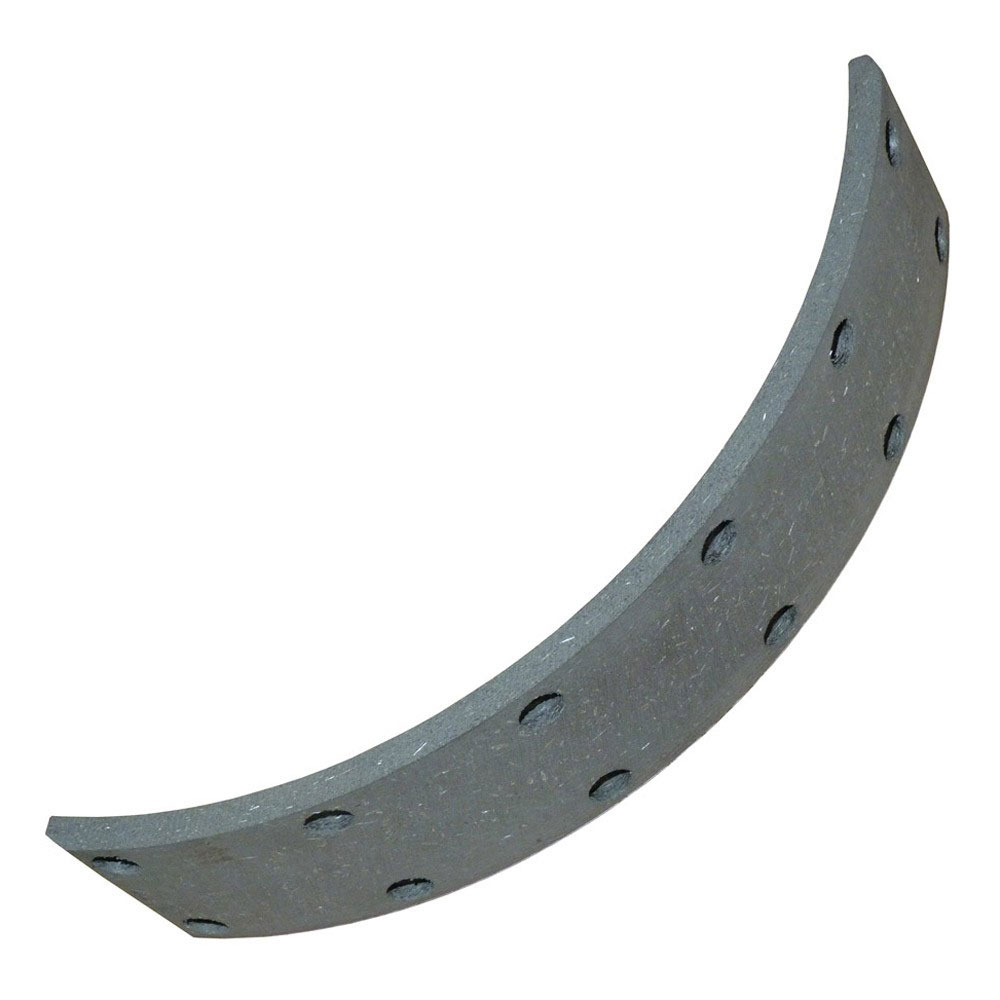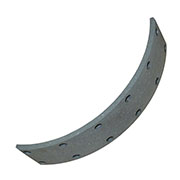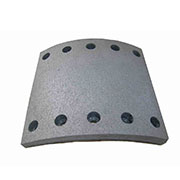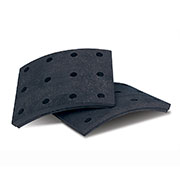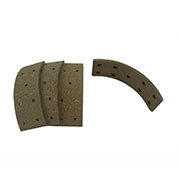
Our experience and expertise in automobile industry helps us to make suspension and steering parts as per your specification with high quality and finishing.
Brake linings are the consumable surfaces in brake systems, such as drum brakes and disc brakes used in transport vehicles.
Structure and Function
Brake linings are composed of a relatively soft but tough and heat-resistant material with a high coefficient of dynamic friction (and ideally an identical coefficient of static friction) typically mounted to a solid metal backing using high-temperature adhesives or rivets. The complete assembly (including lining and backing) is then often called a brake pad or brake shoe.
The dynamic friction coefficient "µ" for most standard brake pads is usually in the range of 0.35 to 0.42. This means that a force of 1000 Newtons on the pad will give a resulting brake force close to 400 Newtons. There are some racing pads that have a very high µ of 0.55 to 0.62 with excellent high-temperature behaviour. These pads have high iron content and will usually outperform any other pad used with iron discs. Unfortunately nothing comes for free, and these high µ pads wear fast and also wear down the discs at a rather fast rate. However they are a very cost effective alternative to more exotic/expensive materials.
Since the lining is the portion of the braking system which converts the vehicle's kinetic energy into heat, the lining must be capable of surviving high temperatures without excessive wear (leading to frequent replacement) or outgassing (which causes brake fade, a decrease in the stopping power of the brake).
Maintenance
When the lining is worn out, the backing or rivets will contact the rotors or drums during braking, often causing damage requiring re-machining or replacement of the drums or rotors. An annoying squeal caused by the warning tang is the typical alert that the pads need to be replaced; if the squeal is ignored for too long, drum or rotor damage (usually accompanied by an unpleasant grinding sound or sensation) will be the typical result.
The lining may also become contaminated by oil or leaked brake fluid. Typical symptoms will be brake chatter, where the pads vibrate as the lining grabs and releases the rotor's surface. The solution is to repair the source of the contamination and replace the damaged pads.
In the automotive repair industry, many consumers purchase brake pads with a lifetime warranty. These pads use a much harder lining than traditional brake pads and tend to cause excessive wear of the much more expensive rotors or drums. For that reason, consumers should ensure that the new brake pads installed are those specified or supplied by the vehicle's manufacturer. Relined brake pads are usually inexpensive and perfectly acceptable, with new lining material attached to reconditioned (cleaned, inspected and painted) backing assemblies.
Brake pads must always be replaced simultaneously on both ends of a vehicle's axle, as the different lining thicknesses (and possibly material types) will cause uneven braking, making the vehicle pull in the direction of the more effective brake. For most vehicles, replacing pads (and therefore linings) is very easy, requiring a minimum of tools and time — the linings are designed to be consumable and should therefore be easy to service.
Brake linings can also be found just about everywhere there are braking systems, from elevator safety brakes to spindle brakes inside a VCR. The form and materials are frequently different, but the principle is the same.


